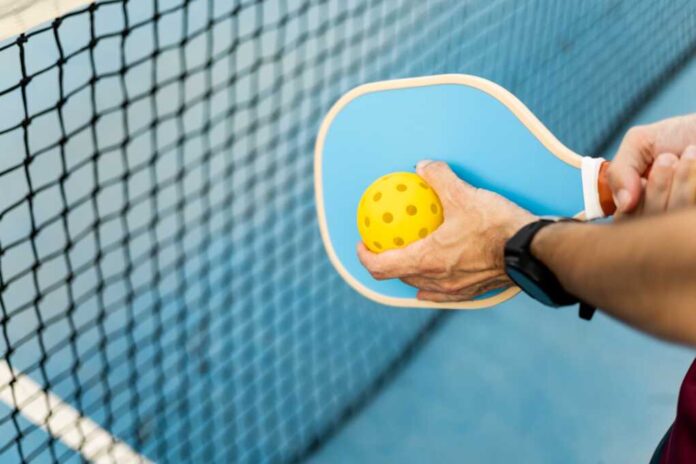
The surge in pickleball’s popularity has brought with it an unforeseen consequence—a notable increase in fractures among older players.
This revelation comes from a recent study presented at the 2024 Annual Meeting of the American Academy of Orthopaedic Surgeons, which unearthed a staggering 90-fold increase in pickleball-related fractures over two decades, predominantly affecting players aged 60-69.
The Growing Appeal of Pickleball
Pickleball, a paddle sport that combines elements of tennis, badminton, and table tennis, has seen an exponential rise in popularity, particularly among older adults seeking a fun, social, and physically active lifestyle.
According to the Sports and Fitness Industry Association, the sport has experienced an 11.5% average annual growth rate over the past five years.
By 2020, there were approximately 1.4 million “core” players—those playing more than eight times per year. This increase in participation has been a boon for community and social interaction among seniors, but it has also led to an increase in physical risks, particularly fractures.
Insights from the Study
The new study aimed to fill a gap in the literature regarding pickleball-related injuries. Utilizing data from the National Electronic Injury Surveillance System (NEISS) from 2002 to 2022, the team sought to identify trends, mechanisms of injuries, anatomic locations, and gender distributions of fractures among players.
Their findings are a wake-up call for many in the pickleball community, revealing not just the significant rise in injuries but also the specifics of these fractures.
Most observed were upper extremity fractures in women aged 65 and older, often resulting from falls—a reflection of diminishing bone health in this demographic. Conversely, men, while less frequently injured, faced more severe injuries that were 2.3 times more likely to require hospital admission, including lower extremity fractures of the hip and femur.
Understanding the Risks
The study highlights an important aspect of sports participation for older adults: the need for awareness and prevention of injuries. Despite pickleball’s low-impact nature, it poses significant risks, especially for those with conditions like osteoporosis that weaken the bones.
Players are encouraged to engage in the sport with enthusiasm, but also arm themselves with knowledge about their own health risks and take proactive steps to mitigate these risks, such as enhancing bone health through diet and weight-bearing exercises.
Mitigating Risks for Older Pickleball Players
The findings presented at the AAOS meeting serve as a crucial reminder for older pickleball enthusiasts to prioritize injury prevention.
Strategies to reduce fracture risk include adopting a balanced diet rich in calcium and vitamin D, engaging in regular strength and balance training exercises, and wearing appropriate protective gear.
Educating players on the proper techniques and strategies to avoid falls and injuries can also play a significant role in safeguarding the health and well-being of the pickleball community.
As pickleball continues to captivate hearts and minds across the nation, it’s imperative that its players, particularly those within the older demographic, stay informed about the potential risks and take appropriate measures to enjoy the game safely. The joy of pickleball lies not just in the thrill of the game but in the ability to play it healthily and safely for years to come.






















